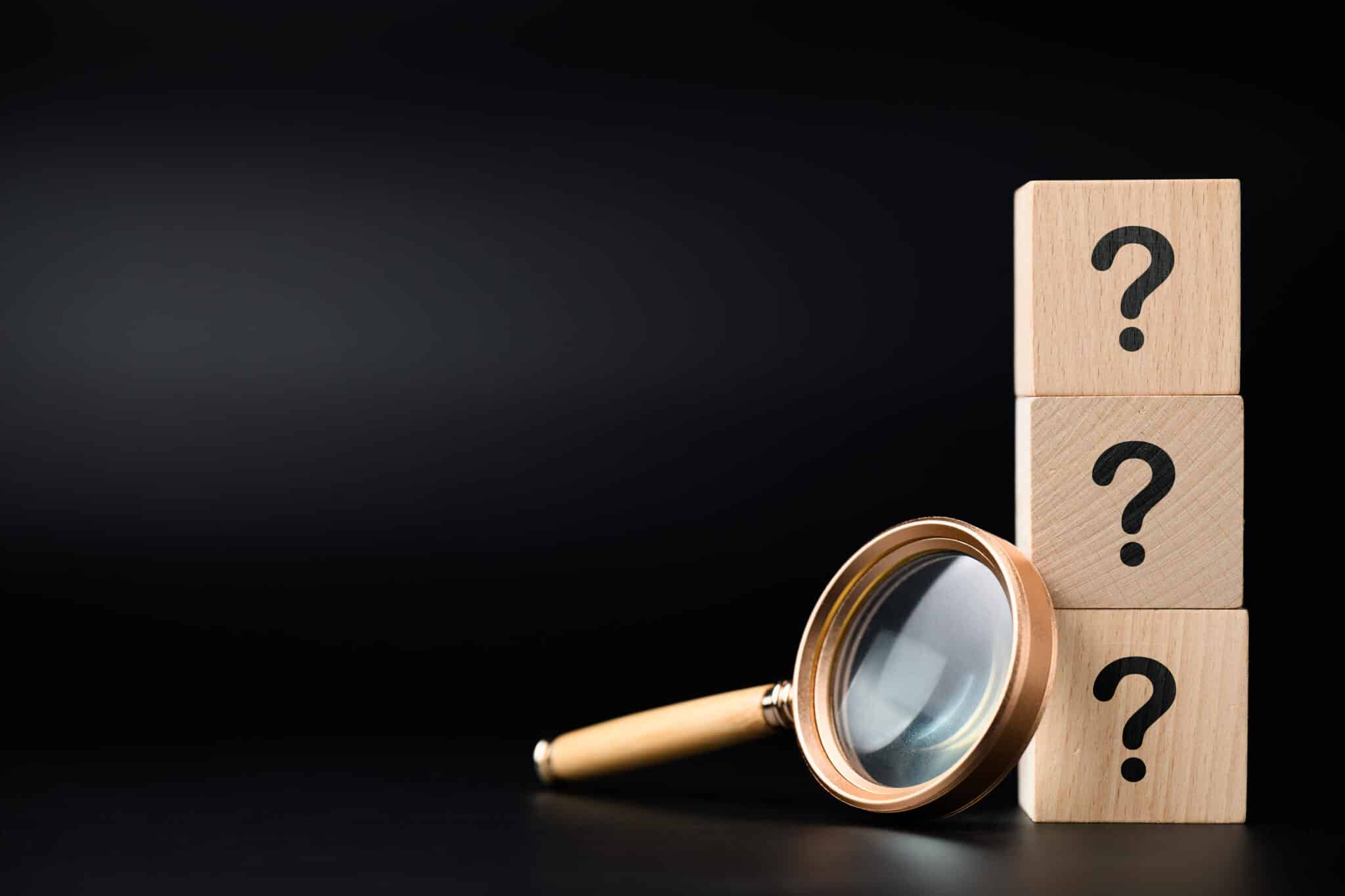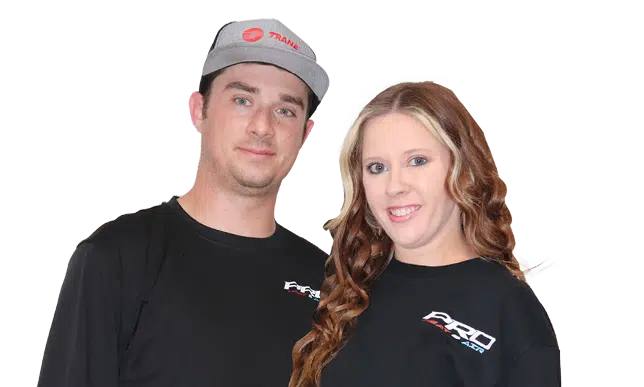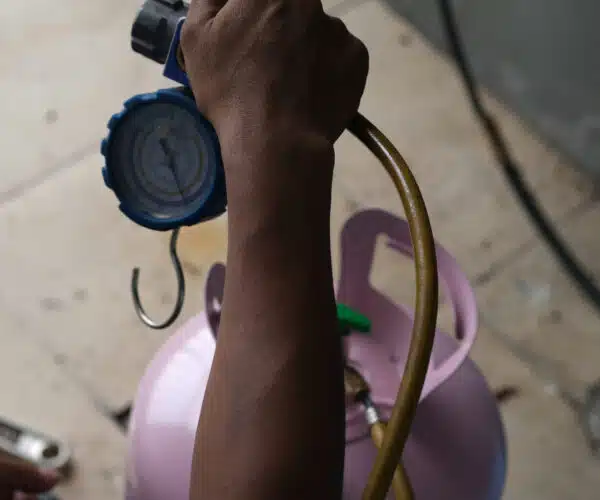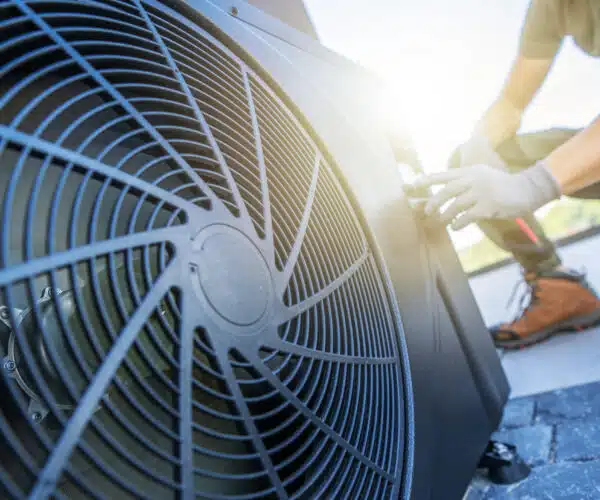A well-functioning furnace is essential for keeping your home comfortable during the colder months. When your heating system starts showing signs of trouble, you might wonder whether you can wait until spring for repairs or if immediate attention is necessary. Ignoring furnace problems can lead to higher energy bills, decreased efficiency, and even safety hazards.
Delaying furnace repair can put unnecessary strain on your heating system, potentially causing further damage. Some warning signs, such as strange noises, weak airflow, or unusual odors, indicate that your furnace needs prompt service. If left unchecked, these issues can worsen and lead to costly breakdowns.
For homeowners in Azle, TX, winter temperatures can dip low enough to make a failing furnace a serious concern. Ensuring your system is in top condition not only keeps your home warm but also helps maintain indoor air quality and energy efficiency. Pro Heating and Air provides expert HVAC services to diagnose and fix furnace issues before they become major problems.
In this guide, we’ll cover the key warning signs that indicate your furnace needs urgent repair. By recognizing these signs early, you can take action before a minor issue turns into a full system failure.
Unusual Noises Coming from Your Furnace
A properly functioning furnace should operate with minimal noise. If you start hearing strange sounds, it could indicate a serious issue requiring immediate furnace repair. Different noises often point to specific problems, so paying attention to the type of sound can help diagnose the issue before it worsens.
- Banging or Booming: A loud bang when the furnace starts up may indicate a delayed ignition. This happens when gas builds up before igniting, which can strain the heat exchanger and cause cracks over time. A damaged heat exchanger can lead to dangerous carbon monoxide leaks, making this issue an urgent safety concern.
- Screeching or Squealing: High-pitched noises often signal a worn-out blower motor or belt. If the motor lacks proper lubrication or the belt becomes loose, it can reduce airflow and cause the furnace to overheat. Over time, this can lead to costly component failures.
- Rattling or Vibrating: Loose parts, a failing blower assembly, or unsecured ductwork can cause a rattling sound. If the vibrations increase, internal components may be coming loose, which could result in more extensive damage. A cracked or broken heat exchanger can also create a rattling sound and may require immediate professional attention.
- Clicking or Ticking: If you hear continuous clicking, it could be a sign of an electrical issue, a faulty ignition system, or a failing flame sensor. Since electrical issues can pose a fire hazard, they should never be ignored.
If you notice any of these sounds, it’s best to call a professional HVAC service like Pro Heating and Air in Azle, TX. Ignoring these warning signs can lead to a complete system failure, leaving you without heat when you need it most. Addressing the issue early can help prevent more expensive repairs and extend the life of your furnace.

Weak or No Airflow
If your furnace is running but you notice weak or no airflow coming from the vents, it could indicate a serious problem requiring immediate furnace repair. Poor airflow not only affects your home’s comfort but can also lead to overheating, increased energy bills, and long-term damage to your heating system.
Common Causes of Weak Airflow:
- Clogged Air Filters: A dirty or clogged air filter restricts airflow, making it harder for your furnace to distribute warm air. This forces the system to work harder, leading to inefficiency and potential overheating. Changing your filters every 1-3 months can prevent this issue.
- Failing Blower Motor: The blower motor is responsible for pushing warm air through your home. If it’s malfunctioning, you may notice weak airflow or no air movement at all. A failing motor might also produce unusual noises like screeching or humming.
- Blocked or Leaky Ductwork: Dust, debris, or even pests can clog air ducts, restricting airflow. Additionally, leaks in ductwork allow heated air to escape, making your furnace work harder to compensate. A professional HVAC service can inspect and seal any leaks.
Why Immediate Repair is Necessary
Ignoring weak airflow can cause overheating, leading to more significant damage, such as cracked heat exchangers or total system failure. If you experience this issue in Azle, TX, Pro Heating and Air can diagnose the cause and restore proper airflow to keep your home comfortable and your furnace running efficiently.
Inconsistent or No Heat
When your furnace struggles to maintain a consistent temperature or stops producing heat altogether, it’s a clear sign that you need immediate furnace repair. A home that feels too cold in some areas and too warm in others can indicate a more serious underlying issue. Addressing these problems early can prevent further damage to your system and keep your home comfortable during the colder months.
One common cause of inconsistent heating is a malfunctioning thermostat. If the thermostat is outdated, incorrectly calibrated, or has a weak battery, it may not be sending the correct signals to the furnace.
This can cause the system to cycle on and off too frequently or fail to turn on at all. Another potential issue is a problem with the furnace’s ignition system. Older units rely on a standing pilot light, which can go out due to dirt buildup or a faulty thermocouple. In modern furnaces, an electronic ignition failure can prevent the system from heating properly.
Blocked or dirty burners can also lead to heating inconsistencies. When burners are covered in dust and debris, they may not ignite correctly, causing weak or uneven heating. Additionally, problems in the ductwork, such as leaks or blockages, can prevent warm air from reaching certain rooms, leaving parts of your home colder than others. Even if the furnace is working properly, compromised ductwork can make it seem like the system is failing.
Delaying repairs can force your furnace to work harder, increasing energy costs and reducing its lifespan. If you live in Azle, TX, reaching out to Pro Heating and Air for professional HVAC service can help diagnose and resolve heating issues before they become costly emergencies.
Short Cycling (Furnace Turning On and Off Frequently)
If your furnace turns on and off more frequently than usual, a problem known as short cycling, it’s a sign that something isn’t working properly. This issue can lead to increased energy bills, excessive wear and tear on the system, and potential breakdowns if left unaddressed.
A properly functioning furnace should complete full heating cycles to maintain a stable indoor temperature. When short cycling occurs, the system struggles to regulate heat, making your home less comfortable.
One possible cause of short cycling is an overheating furnace. When the system gets too hot, safety mechanisms shut it down to prevent damage. This can happen if the air filter is clogged, restricting airflow and causing the system to retain excess heat.
A malfunctioning thermostat may also contribute to short cycling by sending incorrect temperature signals, leading the furnace to turn on and off erratically. In some cases, a furnace that is too large for the home can also cycle too frequently, as it heats the space too quickly before shutting off.
Another potential reason for short cycling is a faulty flame sensor. This small but essential component detects whether the burner is lit. If the sensor is dirty or malfunctioning, it may mistakenly shut off the gas supply, causing the furnace to stop and restart repeatedly.
Over time, this constant on-and-off operation can damage internal components, shortening the lifespan of the entire system.
Short cycling not only wastes energy but also increases the risk of a complete system failure. If your furnace is exhibiting this behavior, scheduling an inspection with Pro Heating and Air in Azle, TX can help identify the root cause and restore efficient operation. Ignoring the issue can lead to more expensive furnace repair needs down the line.
Unusual Odors from the Furnace
A properly functioning furnace should not emit strong or unusual odors. If you notice persistent or sudden smells coming from your heating system, it may be a sign that you need urgent furnace repair.
Unusual odors can signal a range of issues, from minor mechanical problems to serious safety hazards. Addressing these problems early with professional furnace repair can help prevent costly breakdowns and ensure your heating system operates safely and efficiently.
A burning smell is one of the most common furnace odors. If you detect a dusty or burning scent when turning on the heat for the first time in the season, it could simply be dust burning off the heat exchanger. However, if the smell lingers or intensifies, it may suggest an overheating component or a clogged air filter restricting airflow.
These issues can strain the system, requiring immediate furnace repair to prevent long-term damage. A smoky or electrical burning odor is more concerning and could indicate faulty wiring or a motor issue.
Electrical problems should never be ignored, as they pose a fire risk and may require emergency furnace repair to keep your home safe.
A rotten egg or sulfur-like smell is a clear indication of a gas leak, which is a serious and potentially life-threatening issue. Natural gas companies add a distinctive odor to help detect leaks before they become dangerous.
If you smell gas, turn off the furnace, evacuate your home, and contact your utility provider or an emergency HVAC service like Pro Heating and Air in Azle, TX. Immediate furnace repair is necessary to address gas leaks and prevent hazardous situations.
A musty or moldy odor coming from the furnace can indicate excess moisture in the system, which may lead to mold growth in the ductwork or around the evaporator coil. Breathing in mold spores can negatively impact indoor air quality and cause respiratory issues. This issue often stems from poor drainage, blocked vents, or humidity imbalances, all of which require professional furnace repair to restore proper airflow and ventilation.
Rising Energy Bills Without Explanation
If your energy bills have suddenly increased without a change in usage, your furnace may not be running efficiently. A struggling system has to work harder to produce heat, consuming more energy in the process. Ignoring this issue can lead to costly repairs or even a complete system failure, making prompt furnace repair essential. Investing in timely furnace repair can restore efficiency, reduce energy waste, and prevent more expensive breakdowns.
One of the most common reasons for an unexpected rise in energy costs is a dirty or clogged air filter. When airflow is restricted, the furnace must work longer to reach the desired temperature, increasing energy consumption. Replacing the air filter regularly can improve efficiency and help prevent unnecessary strain on the system. However, if changing the filter doesn’t resolve the issue, professional furnace repair may be necessary to diagnose other underlying problems. A failing thermostat can also contribute to higher bills.
If the thermostat isn’t accurately detecting the indoor temperature, it may cause the furnace to run longer than necessary, wasting energy and increasing utility costs. A thorough furnace repair service can recalibrate or replace the thermostat to restore proper function.
A furnace that cycles on and off frequently, known as short cycling, can also contribute to higher energy costs. This issue often results from overheating, clogged vents, or malfunctioning components that prevent the system from running smoothly. Short cycling can put unnecessary wear on the system, increasing the likelihood of costly furnace repair needs in the future.
Additionally, older furnaces tend to lose efficiency over time, making them work harder to produce the same level of warmth. If your furnace is more than 15 years old and your bills keep climbing, scheduling a professional furnace repair inspection can help determine whether repairs or a full system replacement would be more cost-effective.
Yellow or Flickering Pilot Light
The color and stability of your furnace’s pilot light can tell you a lot about the health of your heating system. A steady blue flame indicates that the burner is operating efficiently, while a yellow or flickering flame often signals a problem that requires immediate furnace repair. Ignoring pilot light issues can lead to inefficiency, system failure, or even dangerous carbon monoxide leaks. Prompt furnace repair can prevent these hazards and ensure your heating system operates safely.
A yellow or orange flame usually means that the burner is not getting enough oxygen, which can be caused by dirt buildup or improper gas combustion. When the furnace isn’t burning fuel properly, it can produce carbon monoxide, a colorless and odorless gas that poses serious health risks. Symptoms of carbon monoxide exposure include headaches, dizziness, nausea, and confusion.
If you suspect a leak, turn off the furnace, ventilate your home, and seek professional furnace repair immediately. A skilled technician can assess the issue and restore proper airflow to prevent future risks.
A flickering pilot light or one that frequently goes out could be the result of a faulty thermocouple. The thermocouple is a safety device that shuts off the gas supply if it doesn’t detect a flame. If it becomes dirty or damaged, it may mistakenly cut off the gas, preventing the furnace from staying lit.
In some cases, a weak flame can also be due to gas pressure issues or problems with the ignition system, both of which require expert furnace repair. Without professional attention, these issues can lead to further system malfunctions or even complete heating failure.

FAQs About Furnace Repair
1. How often should I schedule furnace maintenance?
To avoid unexpected furnace repair, it’s recommended to schedule professional maintenance at least once a year. Ideally, this should be done in the fall before the colder months arrive. Regular maintenance helps catch small issues before they turn into costly repairs and ensures that your furnace runs at peak efficiency.
2. What should I do if my furnace stops working suddenly?
If your furnace stops working, check the thermostat settings to ensure it’s set to “heat” and at the right temperature. Also, inspect the air filter, as a clogged filter can restrict airflow and cause system shutdowns. If these basic checks don’t solve the issue, contact a professional furnace repair service like Pro Heating and Air in Azle, TX for a thorough inspection and repair.
3. Can dirty air filters cause furnace problems?
Yes, dirty air filters are one of the most common causes of furnace repair needs. A clogged filter restricts airflow, forcing the system to work harder and leading to overheating, short cycling, and inefficient heating. Replacing filters every 1-3 months can help prevent these issues and keep your furnace running smoothly.
4. How do I know if my furnace is beyond repair?
If your furnace is over 15-20 years old and frequently requires furnace repair, it may be more cost-effective to replace it rather than continue with repairs. Other signs that replacement may be the best option include rising energy bills, uneven heating, excessive noise, and a cracked heat exchanger. A professional HVAC service can assess whether repair or replacement is the better choice.
5. What are the risks of ignoring furnace issues?
Delaying furnace repair can lead to higher energy bills, reduced efficiency, and even safety hazards. Problems like a yellow pilot light, gas leaks, or electrical issues can create dangerous situations in your home. Addressing furnace problems early not only saves you money on major repairs but also ensures a safe and warm home during the colder months.










